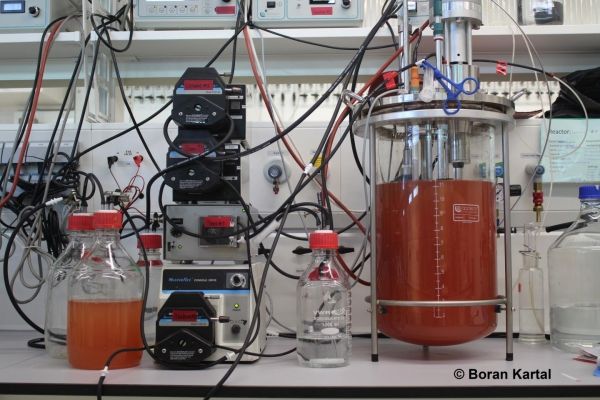Nitric oxide is a fascinating and versatile molecule, important for all living things as well as our environment: It is highly reactive and toxic, it is used as a signaling molecule, it depletes the ozone layer in our planet’s atmosphere and it is the precursor of the greenhouse gas nitrous oxide (N2O). Nitrogen oxides are also pollutants discharged with exhaust gases, for example from combustion engines in cars, and are harmful to human health.
Intriguingly, long before there was oxygen on Earth, nitric oxide was available as a high-energy oxidant, and might have played a fundamental role in the emergence and evolution of life on Earth. A study by Max-Planck-scientist Boran Kartal and colleagues now published in Nature Communications sheds a new light on microbial transformations of this molecule.
Yes they can – with implications for our climate
One major question about nitric oxide remained unanswered up to now: Can organisms use it to grow? “One would think so,” Kartal explains, “as nitric oxide has been around since the emergence of life on earth.” However, no microbe growing on NO has been found - until now. Kartal and his colleagues from Radboud University in the Netherlands have now discovered that the an aerobic ammonium-oxidizing (anammox*) bacteria directly use NO to grow. In detail, these microorganisms couple ammonium oxidation to NO reduction, producing nothing but dinitrogen gas (N2) in the process.
Read more at Max Planck Institute for Marine Microbiology
Image: One of the bioreactors that Kartal and his colleagues used to grow cells of K. stuttgartiensis in the lab. The bright red color is due to the presence of iron-containing cytochrome c proteins in the cells. Anammox bacteria are packed with cytochrome c type proteins, including the enzymes that perform the key reactions of the anammox process, making the cells remarkably red. (Credit: Boran Kartal)


